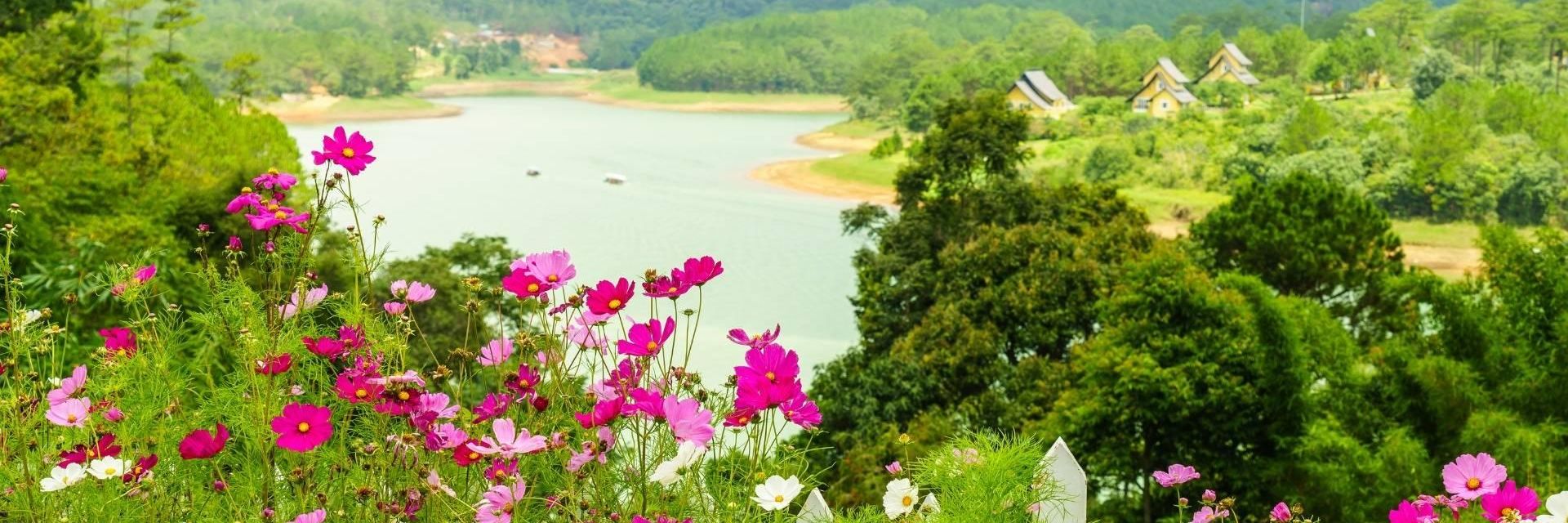The name “Da Lat” combines “Da,” which originates from "Dak" and means "water" or "lake" in the local dialect, and "Lat," is the name of the local ethnic-minority group, a subsection of the Co Ho group. The name “Da Lat” thus refers to the water of the Lat (Lach) people. Da Lat is home to many beautiful lakes, making it a popular spot for travelers. The city has seen an influx of tourists in recent years because of the international popularity of eco-tourism. Now, the city is among the top ten tourist destinations in Vietnam. Climbing Lang Biang Mountain just north of Da Lat and the many walking tracks surrounding the city is popular with both residents and tourists.
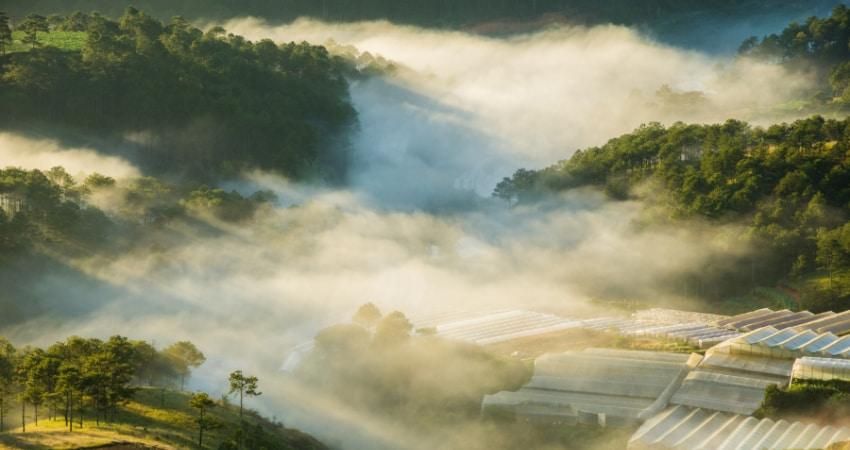
Doctor and explorer Alexandre Yersin (1863 - 1943) founded the French resort in Da Lat in 1895 because he thought the Lang Biang Plateau at that time, the town, and the surrounding rugged was an ideal place for convalescence. Since have attracted a steady stream of domestic terrain and international tourists. Situated at an altitude of 1,500 meters above sea level, Da Lat is 300 kilometers north of Ho Chi Minh City and 110 kilometers inland from the coast.
Da Lat is often referred to as the "City of Eternal Spring" because its average daily temperature varies between 15 and 24°C and is often sunny. The rainy season falls between April and November, with an average annual rainfall of 1.755 meters, while the dry season is between December and March. This climate allows Da Lat to grow flowers all year round, hence its other name, "City of Flowers." A light mist often covers the mountains and fertile valley fields surrounding Da Lat. Farmers ship fruits and vegetables throughout Vietnam; in fact, the road linking Da Lat with Ho Chi Minh City is known as the "Road of Fruits and Vegetables."
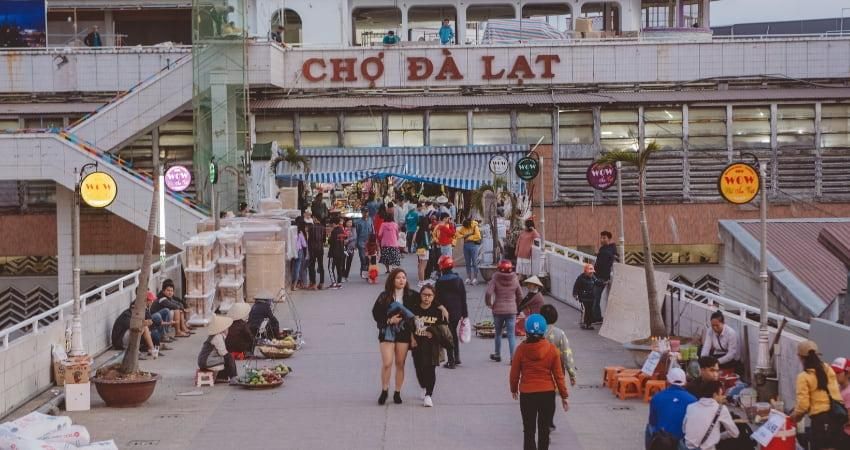
Da Lat has a mixture of ethnic minorities as well as ethnic Kinh (Vietnamese), who have moved there. Here is one of the few places in Vietnam where residents wrap up in warm clothes year-round. The young girls of the region are renowned for their pink cheeks. Da Lat's city center boasts an array of attractions for tourists, who can visit its French-style university grounds, church, and train station. The General Museum displays a good range of indigenous artifacts and various objects of local historical significance.
Visitors to Da Lat can also see palaces erected by French governors and Vietnamese kings, including one built by Bao Dai, Vietnam’s last monarch. Da Lat is also home to at least ten ancient pagodas, the most popular ones being Linh Son, Linh Phong, Linh Quang, Thien Vuong Co Sat, and Thien Vien Truc Lam. Da Lat boasts one of the oldest and most established golf courses in Vietnam. Located on hilly terrain near Xuan Huong Lake, the golf course has been upgraded to international standards for eighteen holes.
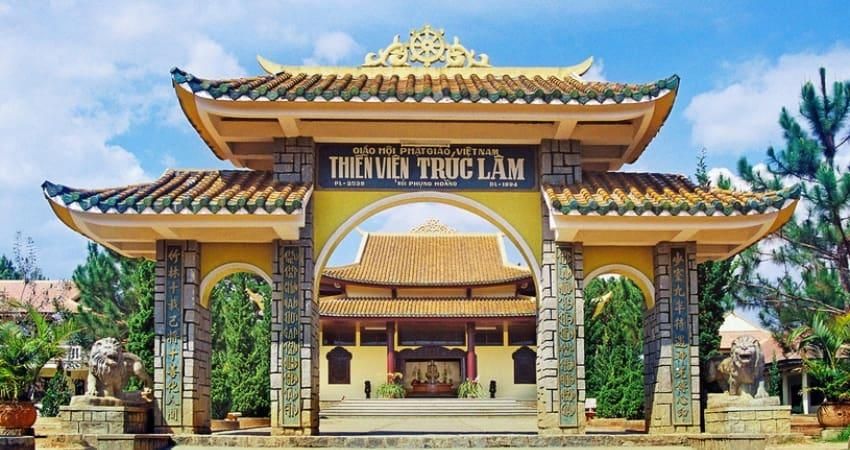
Visitors will see a wide variety of flowers - many of them rare - along the city's streets, in its markets, and the city's parks and nurseries. Da Lat's horticulture industry is thriving; its flowers are in demand throughout the country and are particularly popular in Ho Chi Minh City. Da Lat's oldest flower garden can be found near Da Lat University and Xuan Huong Lake at 2 Phu Dong Thien Vuong Street. Established in 1966 and opened to the public in 1985, this garden displays a large collection of over 300 species and includes local varieties as well as flowers from throughout the world. The garden with its roses, chrysanthemums, gladioli, orchids, and mimosa has flowers in bloom year-round.
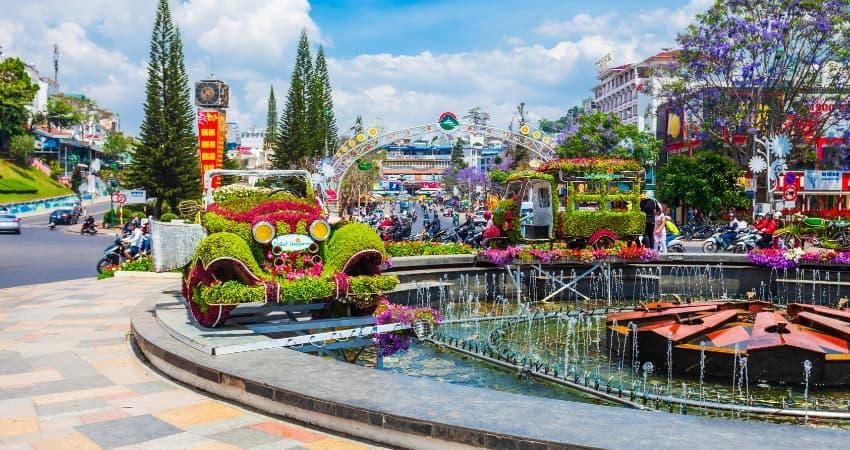
Da Lat boasts the highest concentration of flower species in Vietnam, with a concentration on oriental flowers such as purple peach blossoms, violet Japanese daisies, yellow chrysanthemums, red Chinese hibiscus, jasmine, night orchids, and white lilies. Growers have imported various rose species, such as Rosa Lutea (which grows from the Middle East to China) and Rosa Indicafragans (which comes from Europe). Several newer rose species are named for celebrities, such as the Brigitte for Bridgitte Bardot, the John F. Kennedy, and Grace de Monaco, in addition to established species. One unique flower to be found in Da Lat is the Salem. In 1960, a Vietnamese resident of Belgium introduced the flower, which resembles bells with white, pink, and violet petals. Rose lovers throughout the country prize this species, which travels well.
About twenty species of chrysanthemums and daisies bloom year-round. One of the most popular species is Sans-Souci (Worry-free), in addition to Pensee, Violet, Cosmos, and Immortal. Many species that originated in North America, Mexico, Latin America, Africa, and Europe now have Vietnamese names, such as Hoang Anh (Verge d'Or), Thuoc Duoc (Dahlia), Thu Hai Duong (Begonia Rex), Dạ hợp (Magnolia), Mõm sói (Gueule-de-Loup), Lồng đèn (Fuchsia), Phong Lu (Geranium), Xac Phao (Sauge Eclatante), Sen Da (Joubarbe Des Toits), Sen can (Capucine).
A variety of cherry blossoms (Prunus Cerasoides) is unique to Da Lat blooms at the Lunar New Year. This deciduous cherry tree, which grows well in Da Lat’s temperate climate, sheds its leaves in autumn and remains leafless throughout the winter. First introduced to the region in the early twentieth century, this variety differs from the Japanese cherry blossom, which cannot be in Da Lat's climate.
Da Lat has over 200 species of orchids, with five indigenous species recently discovered. These five feature "Da Lat" or "Lang Biang" in their names: Dendrobium dalatense, Oberonic dalatensi, Dendrobium langbianense, Eria dalatensis, and Oberonia langbianesis. These indigenous species are in as much demand as the favorite locally grown imported species: Balkis, Sayonara, Chateau, and Oriental Legend. Growers sell their orchids both within Vietnam and overseas. Da Lat's orchids grow naturally in fields in contrast to European orchids, which must be grown in greenhouses that have special heat, ventilation, and lighting systems.
Flights to Da Lat operate from Ho Chi Minh City (thirty-five minutes), and Hanoi (one hour and forty minutes). Motorists can take two routes from Ho Chi Minh City. Highway 20 is a trip of three hundred kilometers passing through Lam Dong Province's lush Bao Loc District. Or they can take Highway 1 to Phan Rang and then continue inland on Highway 27 through an area with historic towers erected by the Cham ethnic minority, past the Da Nhim Hydropower Plant, and across the stunning Ngoan Mục Pass with its spectacular view of Da Lat and the surrounding pine forests.
Xuan Huong Lake (Fragrant Lake): Xuan Huong Lake is one of Da Lat City's most famous landmarks. Shaped like a crescent moon, the lake covers five square kilometers. Its clear waters and the surrounding boulevards lined with trees make the park a favorite rendezvous for lovers. Fishing is a popular pastime, as is riding the pedal boats and relaxing with a drink or a good meal in one of the many cafes and restaurants lining the lake.
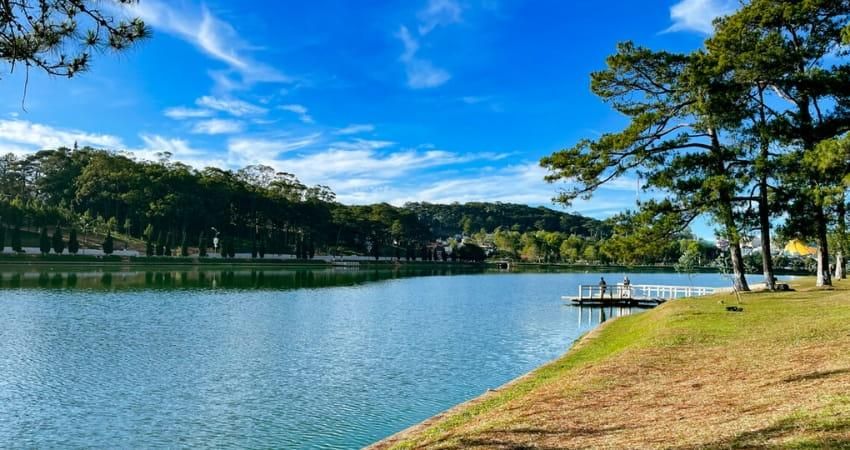
Than Tho Lake (Lake of Lament): This lake, just six kilometers east of Da Lat's center, lies between pine-covered hills. Local legend has the lake witnessed and retains: A young couple that the trees whisper a tragic love story that committed suicide there to remain together. The light breeze across the water carries the sounds of the lovers' sobs. Visitors can see that symbolizes the couple's eternal gravesite love. The Forest of Passion located near the Lake of Lament is also popular as a result of collective imagination and is said to be a romantic place to convalesce.
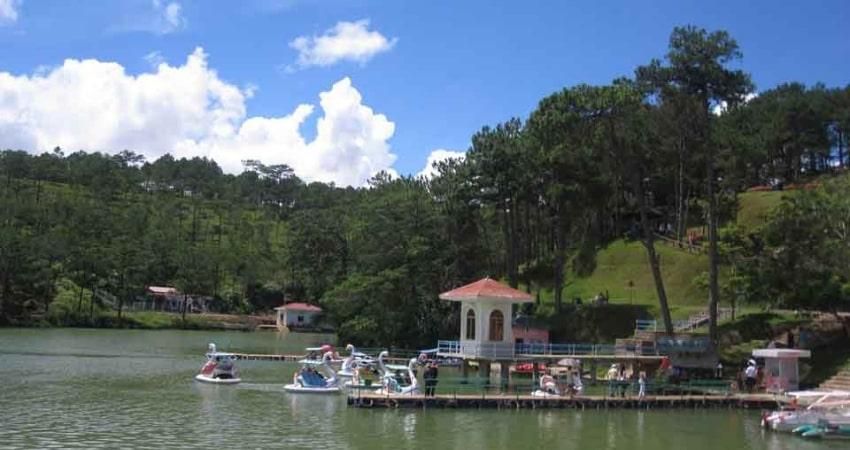
Tuyen Lam (All Forest/ Lake): This lake, located close to the popular Datanla Waterfall and formed by water from Tía Spring and the upper section of Da Tam River on Voi (Elephant) Mountain, is a favorite for rowing and fishing. It is not clear when or how the lake got this name suggesting its forested environment. The water, the pines, and a nearby pagoda create an atmosphere befitting solitary souls.
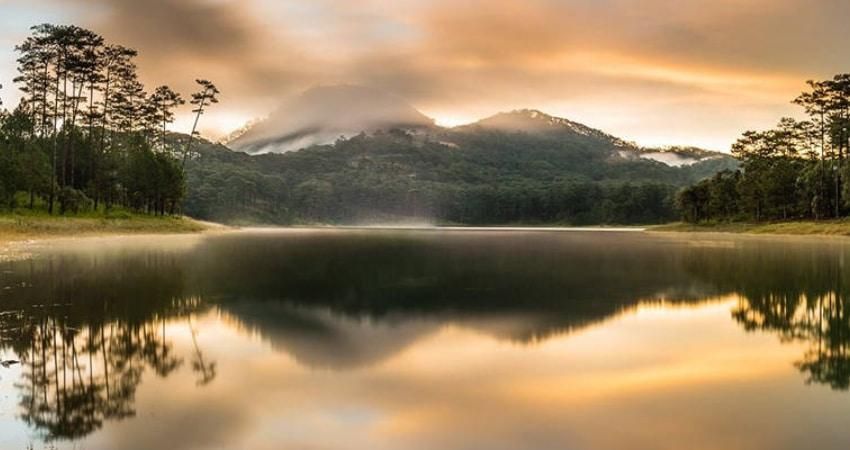
The government began building a dam at the site in 1982 to ensure sufficient water to irrigate hundreds of hectares of rice fields in Đức Trọng District and completed the construction in 1987. Ever since the lake has been a popular tourist attraction for tourists to Da Lat. A boat trip gives close-up views of the surrounding hills covered in pines. Several endangered animals inhabit the pine forests. Attractive tourist sites spot the lake banks, including the hunting grounds of Bảo Đại (the last king of the Nguyễn Dynasty), Bao Dai Waterfall, an area for raising buffalo, and the hunting grounds of the Lat, an ethnic-minority group. A Zen monastery sits atop the hill north of the lake.
Da Nhim Lake: Situated some forty kilometers east of Da Lat on the road to Phan Rang, this lake is worth the trip for its spectacular scenery because it is located inside an inactive volcano. After climbing the volcano, visitors are privileged to find a panoramic view overlooking the surrounding mountains and valleys.
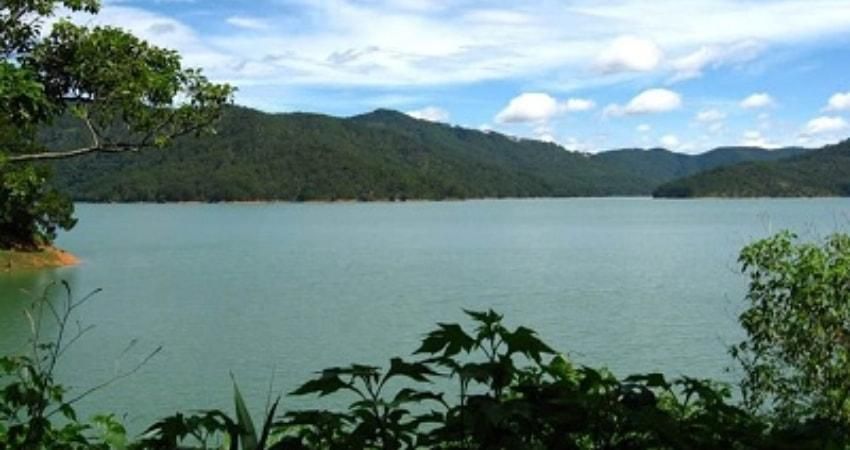
Da Thien Lake: This lake in the "Valley of Love" with the imposing Lang Bian Mountain as its backdrop is a popular meeting place for lovers.
Lak Lake: In the E-de ethnic-minority language, “Lak” means “Lake of Dak Lak Province." The journey of 170 kilometers from Da Lat to this lake passes through the scenic Truong Son Mountain Range and by villages belonging to the M’Nong, E-de, Chu-ru, and Co Ho, ethnic minorities.
Prenn Waterfall: This waterfall is ten kilometers from Da Lat lies at the foot of Prenn Pass and is famous for its cascade - a white satin curtain falling over the foot-bridge located behind the falls. Pine forests and a variety of wildflowers surround the waterfall.
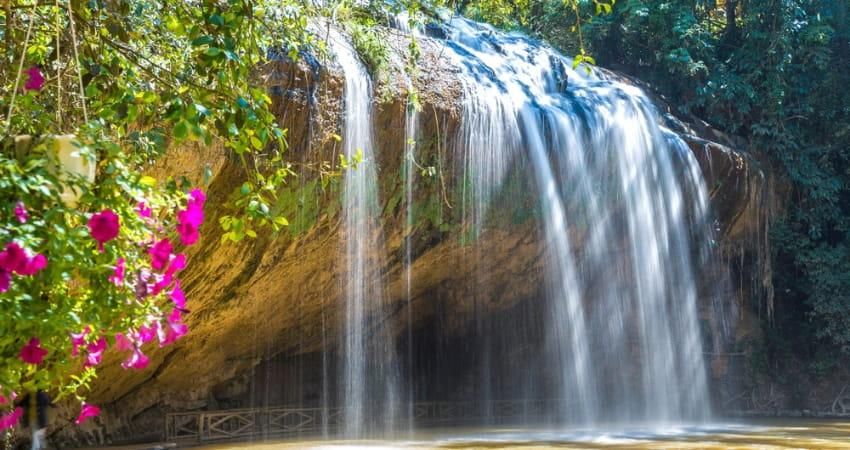
Lam Vien Plateau and Lang Biang Mountain: This area twelve kilometers north of Da Lat includes Lang Biang Mountain, which has the area's highest altitude at 2,162 meters. It is popular with both residents and tourists interested in adventure sports and in studying rare flora and fauna. Residents belong to the Lat, Chil, and Ma ethnic minority groups.
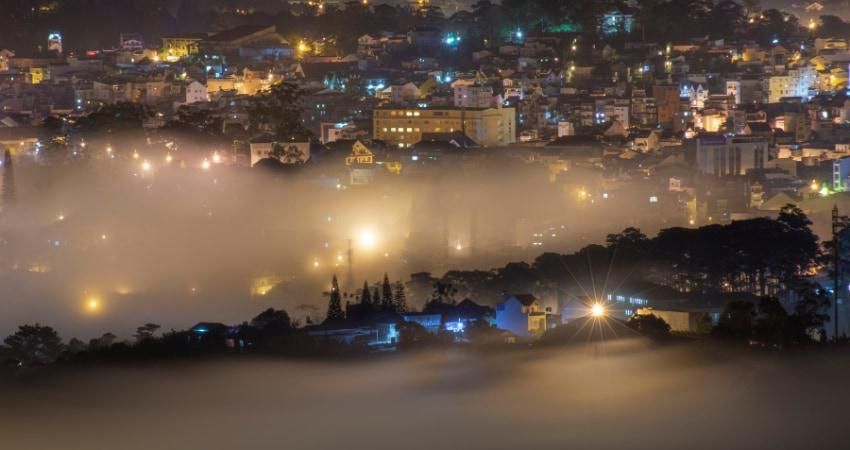
The Valley of Love: This area five kilometers north of Da Lat consists of hills, lakes, pine forests, and fragrant wildflowers and was known as the "Valley of Peace" during the reign of Emperor Bao Dai. In 1972, engineers built a dam and created Da Thien Lake. The valley continues to attract people, both young and old.
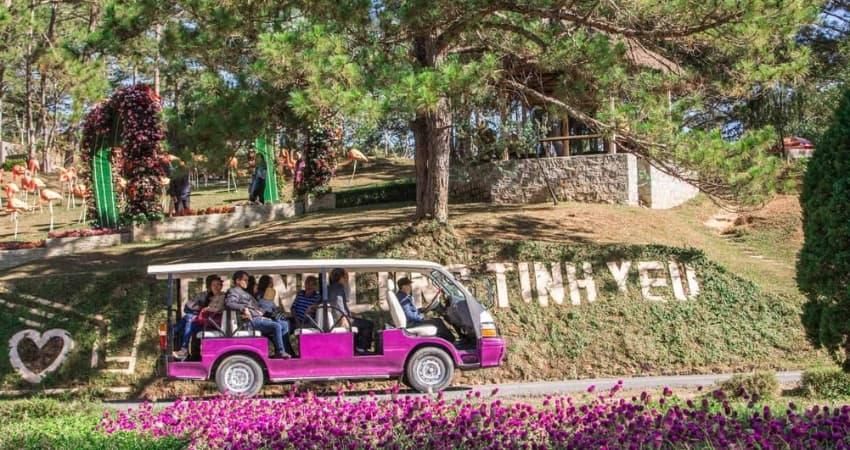
The Forest of Elysium: This forest is thirty-eight kilometers south of Da Lat and is close to Highway 20. It includes the Gougah Waterfall and is noted for its raw, natural setting.



